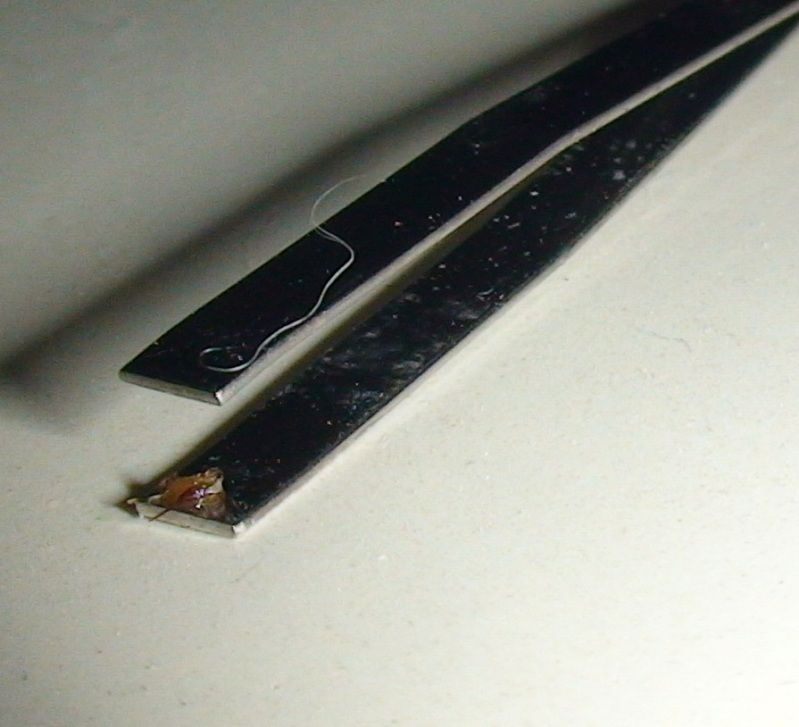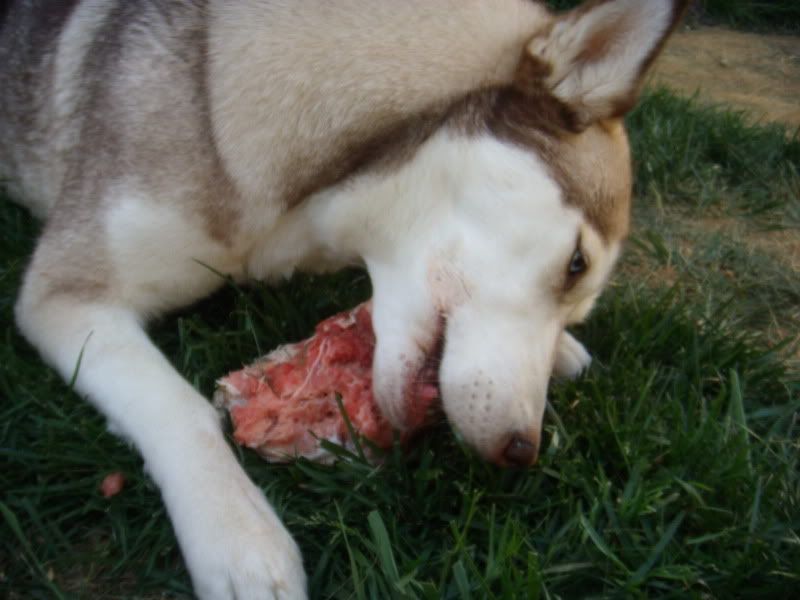Disclaimer: Before I begin I must stress that I am not a veterinarian and I have had no formal medical training. Always discuss preventatives and treatments with your vet and have a clear understanding of how drugs work (all drugs, not just heartworm related) and all possible side effects before administering them. It's okay to say no to your vet if you don't know about a certain product they want to use on your pet. You can always come back after doing your own research, but you can't undo an injection or oral treatment. Don't let your vet pressure you.
This morning I read a blog post about a dog who died due to the effects of a heartworm vaccine called ProHeart 6. A full necropsy is underway to verify that it was the drug that caused the dog to die, but the dog experienced known side effects right down to the vomiting and dying in a pool of its own blood. ProHeart 6 was pulled off the market in 2004 due to the high rate of adverse side effects but was put back on the market in 2011. Veterinarians are supposed to explain the side effects and owners are supposed to sign a consent form. In the case of this dog the owners were not told what could happen, and never signed anything but the drug was given anyway.
An informed veterinarian stated that Proheart caused more deaths in one year than all of the oral heartworm preventives combined did in ten years. Monthly oral heartworm treatments are out of a dog's system within a few days, with the idea being for them to take care of any previous month's heartworm infection. With ProHeart 6, the idea is for the drug to be in the dog's body for 6 months. On drugs.com in large bold lettering it states "Because Of Its Potential For Serious Adverse Drug Reactions And The Absence Of Identifiable Risk Factors Associated With Those Reactions, Proheart 6 Is Only Indicated For Those Dogs In Which Alternative
Preventatives Cannot Be Effectively Administered." It's not intended to be given as a routine vaccine. The site also states "The most frequently reported adverse events requiring clinical intervention have been allergic in nature. These reactions appear to be idiosyncratic, with no identifiable risk factors such as health status, age, sex, or breed. Anaphylaxis is the most clinically significant serious allergic event. The great majority of these adverse events have occurred at the labeled dose."
In light of this tragedy and with mosquito season upon us, I feel the need to share what I've learned about heartworm. As with all other issues of health I am always ready and willing to learn more. Please share with me if you have more or differing information!
Understanding of the heartworm life cycle is the first step in understanding treatment. In the case of heartworm, "preventative" means preventing the larva from reaching adult form, which is when infection would occur. Preventative is treatment in the case of microfilariae, though adult heartworms may need additional treatment. From the American Heartworm Society (AHS):
"The susceptible mosquito becomes infected when taking a blood meal from a
microfilaremic host. The microfilariae develop to the third stage in
the mosquito’s malpighian tubules and then migrate via the body cavity
to the head and mouthparts of the mosquito where they become infective.
The time required for the development of microfilariae to the infective
stage in the mosquito is temperature dependent. At 27°C [80.6° F] and 80% relative
humidity, development takes about 10 to 14 days.
Infective, third-stage larvae (L3) are deposited in a droplet of
hemolymph (mosquito blood) on the host while the mosquito is taking a
blood meal. Immediately after the blood meal, these sexually
differentiated L3 enter the animal’s body via the puncture wound in the
skin made by the mosquito’s mouthparts. Three days after experimental
subcutaneous injection of the L3 in the inguinal region of the dog, most
of the larvae are found in the subcutaneous tissues near their entry
site. By day 21, most of the larvae have migrated to the abdominal
tissues of the dog, and by day 41, they may be recovered from either the
abdominal or thoracic tissues. Apparently L3 and L4 travel between
muscle fibers during migration, whereas juveniles (immature adults)
penetrate muscle and eventually veins, transporting them toward the
heart and lungs. The molt from L3 to L4 begins as early as day 3 and
ends as late as day 9 to 12. L4 molt to the final stage at day 50 to 70.
Worms reach the pulmonary vasculature as early as day 70 and all have
arrived by day 90 to 120. The first worms entering the pulmonary
vasculature on day 70 to 85 are 1 to 1.5 inches in length. Thereafter
the female worms will increase in length by almost tenfold. They become
sexually mature about day 120 post infection. Dogs develop patent
infections (i.e., have microfilariae circulating in their blood) as
early as 6 months but usually by 7 to 9 months post infection."
It is the adult worms that cause infection and harm to your pet. The L3 and L4 larvae are killed by oral heartworm treatments. As explained by the AHS, the L4 molt to becoming an infectious adult worm doesn't begin until day 50 to 70. About 2 months. It takes 6 months for dogs to even test positive for heartworm infection- meaning if your puppy is 5 months old and your vet wants to do a heartworm test, say NO, because it will not turn up positive and is a waste of money.
In many areas of the US, heartworm is very rare. The importance of monthly oral treatments cannot be emphasized enough. This map (source) tells that heartworm is not common, which I believe is due in large part to routine use of oral heartworm preventatives.
 |
Click to enlarge. "Reported positives
from more than 10,000 veterinary clinics, telephone surveys, and IDEXX
Reference Laboratories' results collected from the year 2000 to the present."
[Present being 2007] |
In 7 years, from more than 10,000 clinics, many states had less than 500 cases of heartworm. If I counted correctly, 32 states had less than 500, with 18 having over 500. California is in the 500+ category, but out of the 4,350 dogs tested in 1996-98 in LA county, a total of 18 positive dogs were identified (
source, a good read for those in Southern Cali). Heartworm is not an epidemic. Again I want to emphasize that low numbers are probably in large part due to monthly oral preventatives. They are very important!!
However, giving a monthly preventative every month is not necessary. As already shown it takes a couple months for the microfilariae to develop. If an oral preventative is given at any point it will kill them.
VeterinaryPartner.com says "the microfilariae, L3, and L4 larvae can all be killed by monthly
ivermectin-based heartworm preventive products (i.e. Heartgard,
Tri-Heart, etc.). The milbemycin-based products (Sentinel and
Interceptor) will also do the same job but will kill the microfilariae
much faster, which can create circulatory shock if there are large
numbers of microfilariae dying all at one time." The site also explains that ivermectin, while it does not kill adult worms, will sterilize them and shorten their life span.
A single dose of ivermectin will kill the microfilariae up to 3 months after a dog has been infected. A single dose! You also don't need to get ivermectin from your vet. Former executives from the makers of Heartgard make a generic version called
PetTrust which is much cheaper and you can get it at Walmart. You do need a prescription from your vet. Or you can
order an ivermectin solution, without a prescription. Given that some microfilariae develop faster than others, I would treat every other month- when the weather calls for it.
The weather?? Yes, the weather. By keeping an eye on the weather I have only needed to give Denali one dose in her entire life. The AHS says "
It has been shown under laboratory conditions in three mosquito species
that maturation of larvae within mosquito ceases at temperatures below
57ºF (14ºC)." If the mosquitoes aren't infected then your dog can't get infected. It takes 14 days or longer for the microfilariae to reach their infective stage. So your dog is fine for at least 2 weeks- and if during that 2 weeks the temperature goes under 57º again, the timer resets for another 2 weeks.
There is no reason to give any preventative or treatment when the temperature is going under 57º F at least once every 2 weeks. If the temperature does remain higher then you should give an oral preventative after 2-3 months to kill any microfilariae that may have been transmitted to your pet during that time. As previously mentioned the dose will kill any microfilariae
up to 3 months.
When giving an oral treatment make sure to smoosh the chewable tablet and basically break it into crumbs. Dogs who have been taking a monthly preventative may still end up testing positive for heartworm because the tablets were not chewed, and therefore passed through without the drugs being able to be absorbed.
My way of handling it is to just watch the weather, and give a oral preventative when needed. Even here in San Diego in early June the temperature is dropping to the low-mid 50ºs most nights. Last year the temp stayed high enough in August that I gave Denali one tablet in October. I hadn't seen any mosquitoes at all but it's always better safe than sorry. If you go on vacation with your pets make sure to check the weather there too! Remember, heartworm is COMPLETELY preventable.
To learn more about heartworm and preventing it, see the
Current Canine Guidelines and
Current Feline Guidelines from the American Heartworm Society.






